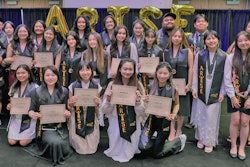Discovering the Ties that Bind
Some folks argue that people from the South Asian Federation — which includes India, Pakistan, Bangladesh, Sri Lanka, Nepal and Bhutan — share no cultural or historical ties with the Asian nations to the East.
“We are connected by the shared experience of British colonialism and by common regions,” says Dr. Sucheta Mazumdar, a professor of Chinese History and dean at Duke University who is currently on sabbatical at Harvard University. “We have centuries of cross-cultural contact. Focusing on our differences has become a form of race management — a divide and conquer strategy.”
In the United States, where racial politics play a significant role in political power and influence, South Asians have begun to recognize that there are benefits to be gained from building coalitions with each other and with other people of color. Asian Indians were added to the Asian/Pacific Islander category of the U.S. Census in 1980. Recent U.S. Census figures estimate that as of March 1998, there are roughly 10.5 million Asian/Pacific Islanders living in the U.S., constituting an estimated 4 percent of the total U.S. population.
Despite their increased presence in society, and in the academy in particular, South Asians say they still experience some irksome problems when interacting with Whites, Blacks, Latinos and even other Asian Americans.
Mazumdar says she had her first brush with racial politics while still a student at the University of California-Los Angeles.
“I went to look for the Asian American Student Union office. It was in the ’70s and I had to convince the Chinese, Japanese and Korean students that I was Asian,” she says. “They took one look and wanted to send me down the hall to the Chicano Students Union.”
Being mistaken for other minorities is not uncommon for South Asians. Some say they’ve been mistaken for Latinos so often, they’ve been tempted to learn Spanish.
Others admit they did not fully understand the degree to which racism permeates U.S. society nor the way it distorts the image of minorities that is exported around the world until they got here and witnessed it for themselves.
“The image that India receives is that the United States is a White Man’s country,” says Dr. Madhulika Khandelwal, a professor of Asian American Studies at the University of Massachusetts-Boston who is of Indian descent. “We did know about Dr. Martin Luther King Jr., though because of his admiration for Ghandi and his non-violent philosophy. [But] coming here, I was really shocked how little I knew about minority history in the United States. I knew nothing about Latin America and about Asian Americans in this country and their political struggles.”
Mazumdar’s exposure to racial inequality didn’t begin with exposure to people of color in the United States. One of her earliest experiences with it came in the form of the verbal insults she heard the Irish nuns use in her missionary school in Delhi, India. Later, while studying in England as a teenager, she recalls experiencing other forms of discrimination.
“You could not get served in certain shops,” she says. “In England, there were no political distinctions between Blacks and Asians. I was Black in England.”
When she came to the United States, it wasn’t long before Mazumdar began to notice that people of color were treated differently from Whites. She also became inspired by their struggle against oppression.
“Angela Davis was my example,” she says. “After I enrolled as a freshman in 1970, I started a journal, The South Asian Bulletin, inspired by similar publications by my friends in African American Studies.
Khandelwal has observed the many ways in which people like her are sometimes pitted against Blacks and Latinos.
“It is very easy to scapegoat Asians because we are seen as eternal foreigners — even after four or five generations,” she says. “[Asians] are pitted against Blacks and Latinos as the people who take away jobs. [Asians] hate them in turn [because] they are the ‘bad’ minorities…”
Despite the challenges South Asians face in dealing with other people of color, “I believe that we are in a common struggle fighting a system that won’t accept all of us as Americans,” Khandelwal says. “What some of us can do through ethnic and cultural studies is to expose this history of divide and conquer.”
© Copyright 2005 by DiverseEducation.com



















